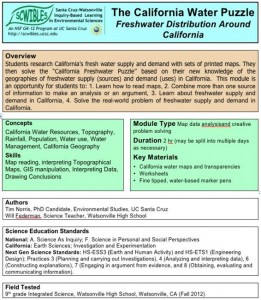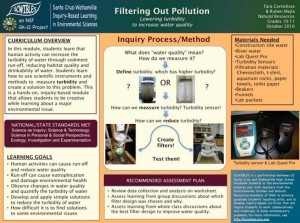 The Impact of Slope and Substrate on Water Flow Speed
The Impact of Slope and Substrate on Water Flow Speed
by Catherine Wade and Will Federman
Water constantly cycles through the earth and the atmosphere. The study of water flow in streams and rivers and on impervious surfaces involves many variables. These include the slope or gradient of a stream, surface, or pipe and the type of substrate that water is flowing through. In this lab activity, students investigate how the speed of water flow changes with different slopes and different substrates.
Students learn: 1) How slope and substrate affect the speed of water flow, 2) How to ask questions, carry out an experiment and develop graphical hypotheses and 3) How to calculate speed and mathematical averages, and 4) How to plot line and bar graphs, and use data to explain results.
Docs: fulltext.docx presentation.ppt worksheet.docx
Keywords: argument, cause, data, erosion, HS-ESS2.C, explanations, graphs, hypothesis, investigations, math, models, questions, systems, water

 Freshwater Distribution Around California
Freshwater Distribution Around California Lowering Turbidity to Increase Water Quality
Lowering Turbidity to Increase Water Quality